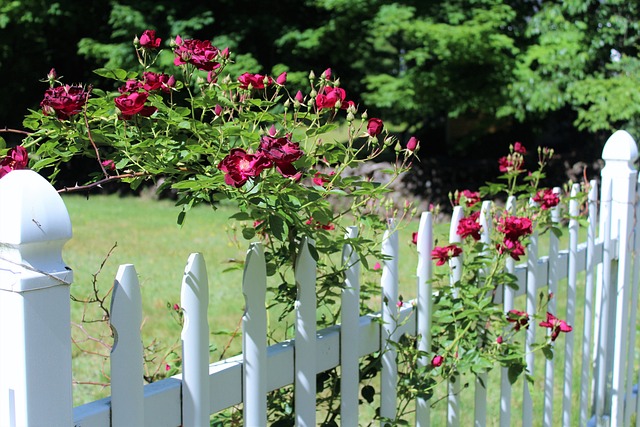DIY Fence Installation: A Comprehensive Guide for New Bedford Homeowners
Are you looking to enhance your New Bedford property with a new fence? Installing your own fence can be a rewarding DIY project, offering both privacy and security. This step-by-step guide will walk you through the entire process, from initial planning to final touches. We’ll cover everything from assessing your specific fencing needs and understanding local regulations to gathering the right materials and tools, ensuring a successful DIY fence installation. Get ready to transform your outdoor space!
- Assess Your Fence Needs and Property
- – Determining fence type and style
- – Measuring and inspecting your property line
- – Understanding local regulations and permits
Assess Your Fence Needs and Property
Before installing a fence, homeowners should thoroughly assess their needs and property. Consider factors like desired privacy levels, aesthetic preferences, budget constraints, and local regulations. Take measurements of your yard to determine the length and height requirements for your fence. Identify any challenges or unique features on your property, such as slopes, trees, or power lines, which may impact installation. Additionally, research fencing options suitable for New Bedford’s climate and soil conditions to ensure longevity.
Evaluating nearby neighbors’ fences can provide insights into popular styles and materials in your area. Check local building codes and permits to understand any restrictions on fence types, heights, and locations. Engaging in this preparatory phase will ensure a smoother DIY installation process and result in a fence that aligns with your specific requirements.
– Determining fence type and style
When it comes to DIY fence installation, one of the most important steps is choosing the right type and style for your New Bedford, Massachusetts property. Consider factors like your yard’s layout, privacy needs, and aesthetic preferences. For example, a solid wood fence offers traditional charm and good privacy, while a vinyl fence is low-maintenance and comes in various styles.
The size of your yard and existing structures will also influence your decision. If you have a large, open space, a tall, picket fence might be suitable for adding visual appeal and defining property lines. However, if your yard is smaller or near neighbors’ properties, a shorter, privacy-focused fence could be more practical.
– Measuring and inspecting your property line
Before beginning any DIY fence installation project, it’s crucial to start by accurately measuring and inspecting your property line. This step is fundamental for ensuring your fence stays within legal boundaries and avoids potential disputes with neighbors or local authorities. Begin by obtaining a survey of your property from the appropriate governmental body in New Bedford, which will provide an exact map of your property lines. Next, use string and stakes to visually mark these lines on the ground, allowing you to get a clear understanding of where the fence should begin and end. This process involves careful observation, taking note of any existing structures or features that may impact the fence’s placement, and ensuring that your design aligns with local building codes and regulations.
– Understanding local regulations and permits
Before beginning any DIY fence installation project, it’s crucial to familiarize yourself with New Bedford’s local zoning laws and building codes. These regulations often dictate the type of fencing material, height restrictions, and even where along your property line the fence can be constructed. Failure to comply could result in fines or the requirement to remove the fence.
Obtaining the necessary permits is a vital step in the process. Contacting your local building department will provide you with information on required permits and any specific guidelines for fence installation. Ensuring compliance from the outset saves time, effort, and potential headaches down the line.
